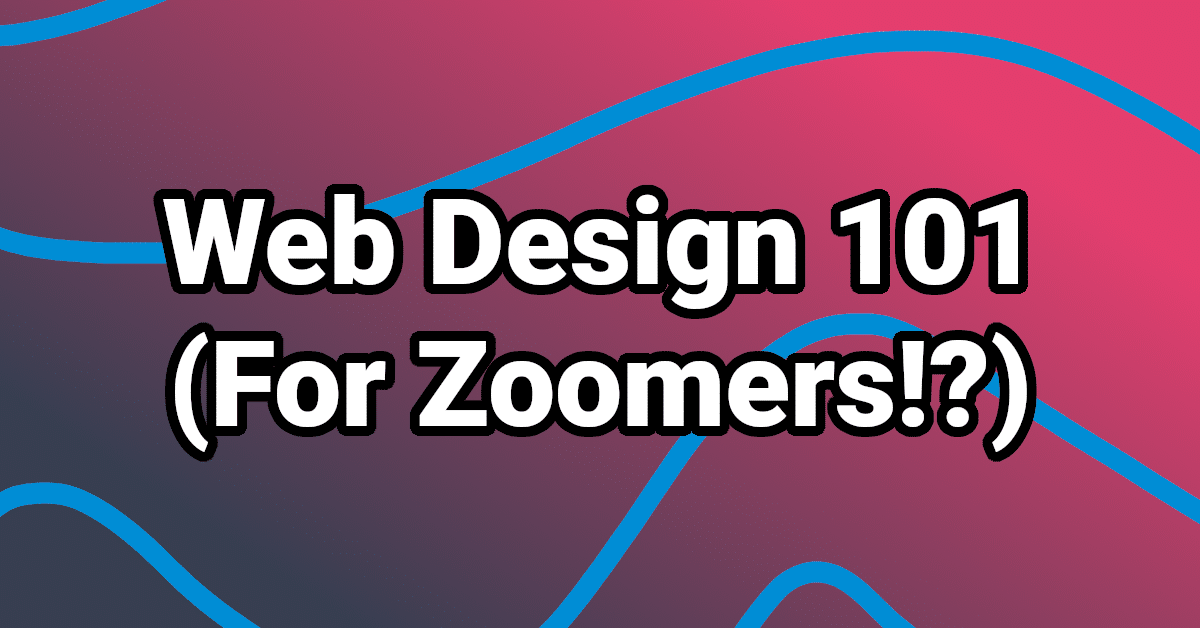*This post may contain affiliate links that help keep the lights on, find more info in our full disclaimer.
9 Simple Ways to Improve Your Web Design
- Thomas DeMichele
Why Your Website Design Matters
Having a great website design is an essential component of any successful business. It helps you create a positive impression upon customers, show off your product or service, and ultimately convert more visitors into customers. However, getting your website design just right can be a challenge.
Whether you’re just starting out with web design or are looking to give your current site a refresh, here are 9 simple ways to improve your website design:
- Importance Of UX
- Choose The Right Color Scheme
- Simple Navigation
- Power Of White Space
- Optimizing For Mobile
- Using Images And Videos
- Call-To-Actions
- Social Media Buttons
- Testing Your Websites Performance
The Importance of User Experience (UX)
Good web design is essential to any website. User Experience (UX) is an important part of web design, and it should always be given priority when making changes. UX focuses on making sure the user has a good experience when visiting a website, which includes providing a web site that is easy to use, visually appealing, and free from technical glitches. If you neglect to prioritize UX, your website may not provide the same level of satisfaction to visitors as other websites.
To further improve the experience you offer visitors, you should also look at accessibility. Make sure your website works for people with disabilities, and also for people who prefer different browsers or devices.
Creating a well-rounded design that caters to a wide array of users is an effective step towards creating an enjoyable experience for all. There are many simple things you can do to enhance your website’s design. Start by selecting colors and font types that are pleasing and match with your brand. Additionally, be sure to use high-quality photographs and videos to draw in visitors, as well as dynamic page layouts to keep things interesting.
Organizing your website’s content in a logical way and optimizing it with the right keywords will also improve its usability and make it easier for visitors to find what they are looking for.
Whenever possible, use graphics to communicate information instead of relying solely on text. It’s also worthwhile investing in professional support for your website. This can help ensure your web design follows modern standards and trends. Above all, remember that how the website looks is only half the story. Taking the time to make the website functional and user-friendly should be the primary focus.
Choosing the Right Color Scheme for Your Website
Selecting the right color scheme for your website is one of the most critical elements of designing an attractive, user-friendly website.
The color scheme helps to create a distinct visual identity for your brand, as well as an overall impression of the website. Taking the time to select a few colors that look great together creates an aesthetically pleasing and cohesive website design. When choosing a color scheme for your website, be mindful of the audience you are trying to reach, as certain colors evoke different emotions in different people.
Bright and contrasting colors may be eye-catching, but can sometimes be overwhelming and distracting from the content, while softer, neutral shades may be soothing, yet can be too bland. Experiment with different variations of colors to build the perfect color palette that best represents your brand.
Additionally, consider how the colors may render on different monitors and devices, and make sure all custom fonts and icons match your color scheme. Using lighter and darker shades of your main colors to create contrast can also bring visual interest and depth to your design.
With careful consideration of color psychology, you can create the perfect color scheme for your website, that looks visually pleasing and encourages visitors to explore the content. With careful consideration of color psychology, you can create the perfect color scheme for your website, that looks visually pleasing and encourages visitors to explore the content.
Creating a Simple and Intuitive Navigation
When it comes to website design, an organized, simple and intuitive navigation system is paramount. Not only does it make it easier for visitors to find the information they need, but also helps to build a sense of trust and familiarity.
A few simple strategies to ensure an effective navigation system include labeling all links clearly and placing the most important pages in a prominent position in the main navigation bar. Additionally, visitors should be able to access important pages quickly and easily, with no complicated dropdown menus or complicated navigation structures. It is also a good idea to break down the navigation in sections to make it more readable and easier to identify. Keeping the navigation consistent between different pages is also key because it prevents a user from feeling lost. Furthermore, using breadcrumb links can give a visual indication of where the user is, and by having an always-visible search box, visitors can quickly access anything they need without having to meticulously scroll through all the pages.
Last but not least, a search engine optimized site structure is an important factor, since it helps users find your website using search engines such as Google or Bing. In conclusion, having a simple, intuitive, and well-structured navigation system with visible search boxes is essential to create an excellent user experience, and thus improve web design.
The Power of White Space in Web Design
White space is a key element in web design that should not be overlooked. It provides spaciousness and openness, making the site more attractive and inviting to visitors. White space can also be used as a strategic tool to draw people’s attention to certain parts of the website or to create a sense of hierarchy and order. Not only that, but it can also balance various elements of a website and make it easier to read and comprehend.
All of these factors make the use of white space an essential part of web design.
Using white space correctly can improve the user’s experience significantly. For example, by strategically placing white space, the design elements become more cohesive, creating a simpler and easier-to-navigate website. Visually, white space can also create contrast for each element, allowing for better clarity and focus on the primary elements of the website.
Furthermore, white space makes scanned webpages more comfortable and easier to read, as the content is separated into digestible chunks.
For the purpose of creating white space, the size of fonts and the surrounding elements must be considered. A carefully balanced font size can help direct attention to the elements with the most significant weight in the design. Additionally, the use of tints, hues, and shapes can also help further differentiate and draw people’s attention to important information.
Overall, white space is an essential aspect of design that provides structure, clarity and focus. It can also improve user experience, both visually and emotionally. Therefore, it is essential to include white space consciously in all web designs, planning and arranging it to obtain the desired look and feel of the website.
Optimizing Your Website for Mobile Devices
Creating a mobile-friendly website is essential for being successful on the web, as more and more people are accessing the internet from their smartphones. This means that any content on your site must be scaled down for smaller screens, and elements must be easily clickable and interactive. Additionally, all video and image files must be optimized for mobile, making sure that loading times are quick.
Furthermore, the font size for your content must be large enough and easy to read on a small display. Improving website speed is also essential for mobile devices, as it can make a big difference in user satisfaction and engagement.
Finally, using mobile optimization features such as caching and image optimization can reduce page loading times dramatically. All of these things combined should give you a website that is optimized for mobile, and will offer users a positive experience no matter what device they are viewing it from.
Using High-Quality Images and Videos
To give your web design extra zest, consider using high-quality images and videos. Doing so is a great way to create a standout website, and can give the overall design extra flair. However, it’s important to use files of the correct size, otherwise, visitors may be exposed to long loading times and other lags.
When selecting an image or video, consider the size and resolution, making sure to choose a file size that is best suited for the purpose of your website.
Once you have identified your ideal file size, reduce it to the maximum size needed. This will ensure that images and videos are optimized and won’t bog down the loading time of your website.
It’s also wise to use vector graphics wherever possible. Vector graphics are much lighter in size and they are quite versatile. You can use these to make logos and icons, and they are also great at preserving image edges. This means that you can scale vector graphics up or down without compromising the quality of the image. Although these types of graphics can cost more in production, the payoff can be worth it since loading times are significantly improved.
By taking the time to find the right images and videos and to make sure they are properly sized and optimized, you can help make your web design stand out. It also ensures your loading times remain snappy, putting the user experience first.
Incorporating Call-to-Actions (CTAs)
CTAs are a great way to draw attention and encourage users to take action. Your website should include visible and clickable buttons that lead users to pages with more information or, if you’re selling a product or service, to the checkout page. Additionally, you should design CTAs to be relevant to the page where they appear and make sure the text is brief and familiar. Furthermore, use visuals to further draw the user’s attention and illustrate the message the CTA is providing. Adding color to the button is also an effective way to make the message stand out. When it comes to CTAs, it’s important to ensure that each one is discrete but obvious and that they are correctly placed so they can be easily located and clicked.
Implementing Social Media Sharing Buttons
Incorporating social media sharing buttons into your web design is a great way to increase your site’s visibility and grow your viewership. With just a few clicks, your visitors can help promote your content across a variety of social media platforms, connecting you with their followers and getting the word out about your website. You can choose from a variety of social media buttons, such as Facebook, Twitter, LinkedIn, and Pinterest, and link them directly to your content or website. Additionally, you can program the buttons so that each time someone shares your website or content, a notification is automatically posted. This helps ensure that users are reminded of your website, even after they’ve clicked away.
Not only does integrating social media sharing buttons make it easier for viewers to share your content, it also improves your website’s overall usability. No matter how great the content on your website is, if users find it difficult to share, they’re less likely to take the time out to do so. Having the ability to easily share content can be a huge incentive for users to keep coming back. Taking the step to make your website more user-friendly by adding social media buttons can also help improve user satisfaction and loyalty.
Making your web design shareable can provide a major boost for your website. Not only does it allow for greater visibility and the potential for more followers, but it also encourages user engagement and loyalty. By taking the extra step to add social media buttons to your website, you can help take your web design to the next level. Excerpt: Making your web design shareable can provide a major boost for your website. Not only does it allow for greater visibility and the potential for more followers, but it also encourages user engagement and loyalty.
Testing and Analyzing Your Website’s Performance
In order to ensure that your website is performing optimally, it is important to regularly review your metrics, test out new design elements, and continually look for ways to improve your website design. This may include making tweaks such as changing the flow of navigation, updating layout elements to be mobile-friendly, or adjusting the content for more visual appeal. Additionally, incorporating user feedback and analytics data can help you identify areas where further improvements can be made. By optimizing your website performance and addressing any areas of concern, you can improve the overall design and provide a better experience for your visitors.
Conclusion: Putting it All Together
By following these 9 simple tips, you can start to improve your website design and make sure it’s performing at its best. Remember, your website’s design should always reflect your brand and values, so be sure to take the time to get it just right. With the right design in place, you can take your website to the next level.
The ultimate goal of effective website design is to create an immersive on-brand experience for website visitors – and if you follow the 9 tips outlined in this article, that is exactly what you will achieve. By updating your color palette, focusing on content clarity, and taking a mobile-first approach, you will be able to create a website that resonates with both customers and search engines alike. In addition, you can make sure your website is running at top speed by implementing accelerated mobile pages, Streamlining navigation and eliminating any excess clutter. With these changes in place, your website will be ready to face whatever is thrown at it – and help you achieve your online goals.


